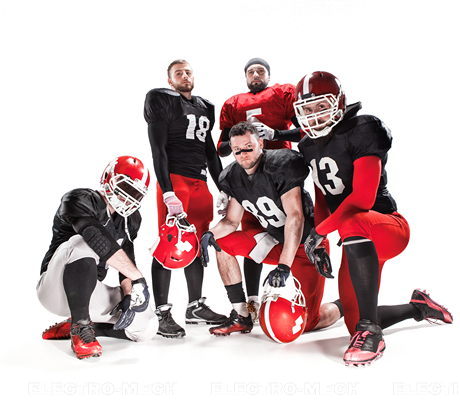
- Coaches looking for an edge should begin by mastering a few basic football strategies
- Among these football tactics are creating a balanced offense and a flexible defense
- Scouting an opponent in an effective way helps to select the most appropriate football formations
If you’re looking to light up the football scoreboards, these strategies are a must!
Running and Passing Offense
The weather patterns during football season is a key factor in how a coach assembles an offense. In areas where snow, rain, and other bad weather are common, a coach is well advised to base his offense on the running game. In areas where the fall climate is milder, it is possible to rely more heavily on the pass. But in either situation, relying solely on the run or the pass is seldom a recipe for success.
It is easier to succeed at the run if a team can run both inside and outside. Offensive lineman should be skilled at both basic drive blocking and at pulling and delivering blocks while on the move. Good conditioning and repetitive drills can help make this happen. Each offensive lineman must understand the area that his opponent must be kept away from. Ideally, the offense has a powerful yet agile tailback who can fight through narrow spaces inside as well as accelerate around the perimeter.
The passing game depends heavily on the quarterback. A tall, nimble quarterback with a strong and accurate arm is worth his weight in gold. But a team with an average quarterback can still pass effectively. Some keys to success in passing are protecting the quarterback, developing split-second timing between the quarterback and receivers, and controlling the ball. Quarterback protection can be enhanced by supplementing basic pass-blocking drills with extensive work on picking up blitzes. Timing in the passing game hinges on the ability of the receivers to run exact routes and on the quarterback’s releasing the ball at the appropriate moment during the route. Ball control is facilitated by high-percentage plays such as slants and curls.
Once a team can both run and pass effectively, the coach should mix the two types of plays in an unpredictable way. For example, a team should sometimes pass on first downs and sometimes run on third downs. Success in the running game can set up a play-action pass, just as success in the passing game can set up a draw play.
Running and Passing Defenses
Large, agile defensive linemen are an outstanding tool for stopping the run, but run defense begins with the defense players’ willingness to play hard. A defense of average-sized players can still succeed if the players learn to be quick off the ball and pursue the ball carrier relentlessly. Extensive work should be done with lateral pursuit so that defenders at each position can learn the correct angles of approach. Knowing an opponent’s tendencies in various situations can help defenders swarm to the spots that will blow up the plays. Finally, each defender should understand his basic area of responsibility for every formation.
A pass defense relies mainly on the ability of the secondary to cover receivers. A key skill for players in the defensive secondary is being able to backpedal quickly and change direction without losing speed. This allows the defender to minimize his reaction time to a receiver’s change in direction. Teaching defensive backs to tackle properly and to secure interceptions also important. Finally, a strong pass rush takes pressure off the secondary and may force quarterbacks into mistakes.
Scouting
Getting video of an opponent’s recent games provides a coach with a tool that can significantly boost his team’s performance. Ideally, an opponent’s favorite offensive plays and defensive football formations should be diagrammed based on viewings of the video. Coaches should identify the opponent’s strengths and weaknesses on both offense and defense, and adjust their basic systems accordingly. A key point is to make only adjustments to the systems and not overhaul them completely from week to week, as players must be allowed to develop a comfort level through repetition of basic responsibilities.
